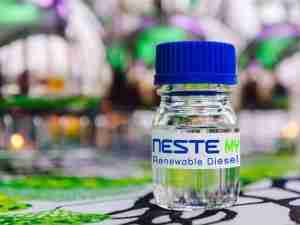Canada Oil Dependence on U.S. Loosens in Age of Donald Trump
By: | Mar 10 2017 at 05:00 AM | International Trade
The Canadian oil patch’s half-century bond to the U.S. market is loosening one tanker load at a time in Donald Trump’s “America First” era. Last month, a ship loaded oil off Newfoundland and set sail on a 10,000-plus nautical mile journey to China, following on the heels of an oil sands cargo shipped from the U.S. Gulf Coast. India-based Reliance Industries Ltd is set to receive the first shipment of heavy Canadian crude in April, a person familiar said last month.
For a country that sent about 99 percent of its crude exports to the U.S. last year, the recent flow to Asia is a welcome sign of diversification to many Canadian producers and political leaders.
“With any kind of business, you don’t want to have just one market so I think it will continue to be important that Canada expand its access to markets wherever it can,” Al Monaco, chief executive officer of Calgary-based Enbridge Inc., North America’s biggest pipeline operator, said this week at the CERAWeek by IHS Markit conference in Houston.
Border Tax
The Trump administration is mulling a border tax that could raise the cost of imported oil, a prospect that’s undermining the values of Canadian energy producers versus their U.S. counterparts. At the same time, U.S. oil production is rising again after a year-long slump, displacing foreign oil.
The push to lessen dependence on the U.S. comes as international oil companies reduce their exposure to Canada’s oil sands. Royal Dutch Shell Plc and Marathon Oil Corp. said Thursday they sold C$12.7 billion of operations in Northern Alberta assets after Exxon Mobil Corp and ConocoPhillips slashed billions from their Canadian reserves.
Canada, holder of the world’s third-largest crude reserves, sent 3.4 million barrels a day to its southern neighbor in December, making it the biggest supplier to the U.S., Energy Department data show. U.S. refiners in the Midwest and the Gulf Coast have invested billions of dollars in machinery in recent years to process the heavy grades produced in Alberta’s oil sands. A set of crude pipelines and rail networks bind the two countries energy markets together.
While close ties give Canada a direct link to the biggest oil-consuming country, access is limited to other international markets such as Asia, where prices are often higher.
“Any time we can get our crude off shore in Canada is a good thing,” Tim Pickering, founder and chief investment officer of Calgary-based Auspice Capital Advisors Ltd. “There is incremental demand from the Asian marketplace.”
Iraq’s Basrah Heavy crude in Asia traded at about a $12 a barrel premium to similar Western Canadian Select Thursday, data compiled by Bloomberg show. That compares to a premium of less than $2 a barrel a year earlier.
Few Alternatives
Should a tax be imposed on oil exports to the U.S., Canada has few alternative customers for its crude, Kevin Birn, a director at IHS Energy in Calgary, said by phone.
Most of Canada’s crude exports that don’t go to the U.S. originate from platforms in the Atlantic, off Newfoundland. The U.K. was Canada’s second-biggest export market for oil last year, buying about 20,000 barrels a day.
While some Canadian crude is shipped to the U.S. Gulf Coast for re-export overseas, Kinder Morgan Inc’s 300,000 barrel-a-day Trans Mountain is the only pipeline that links a Canadian seaport to Alberta, according to BP Plc. Still most of what flows down the line goes to U.S. refineries in Washington state.
Trans Mountain Pipeline
That’s poised to change by the end of the current decade when Kinder Morgan is scheduled to expand the Trans Mountain Pipeline to 890,000 barrels a day. The company forecasts that about 450,000 barrels a day of crude will go to northeast Asia, according to a market analysis it submitted to Canadian regulators in September 2015.
With the pipeline to the Pacific, heavy Western Canadian Select crude could be sold to Asia at a discount to West Texas Intermediate futures of about $8 a barrel versus more than $14 now, translating into an extra $3.9 billion a year for Western Canadian producers, Pickering said.
As strong as the desire is to open new markets, some factors are drawing the countries closer together. In January, President Trump signed an order reviving the TransCanada Corp’s Keystone XL pipeline, which would carry 830,000 barrels a day from Alberta to Nebraska. The project was rejected by former President Barack Obama in 2015.
The project doesn’t face any major remaining hurdles to U.S. approval, David MacNaughton, Canada’s ambassador to Washington, said.
To be sure, there are limits to how much Canada can reduce its dependence on the U.S.
U.S. Midwest and the U.S. Gulf Coast refiners are “tremendously competitive” and configured to run Canadian crude, Enbridge’s Monaco said. “So you have this natural marriage between these two countries.”
That hasn’t kept Canadians from trying to loosen the ties that bind. After Trump’s January order revived Keystone XL, Alberta’s Premier Rachel Notley welcomed the decision but said a pipeline to the U.S. wasn’t the top priority.
“Our view has been first of all that we need to diversify our markets,” she told reporters in Edmonton in January. “We can’t rely on one market and one market only.”










